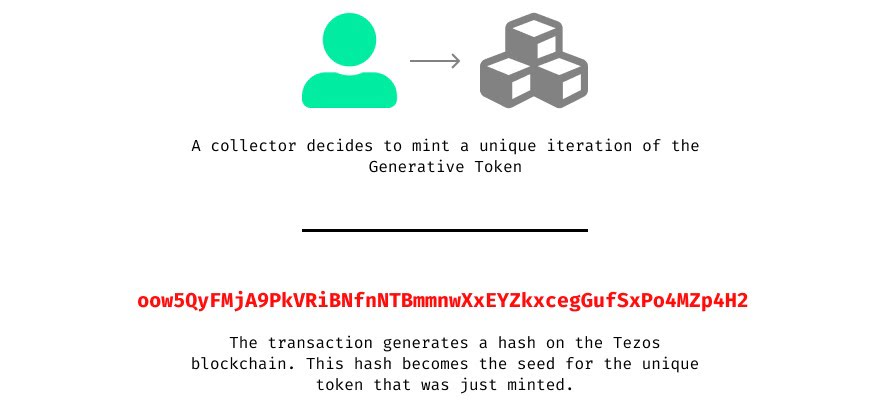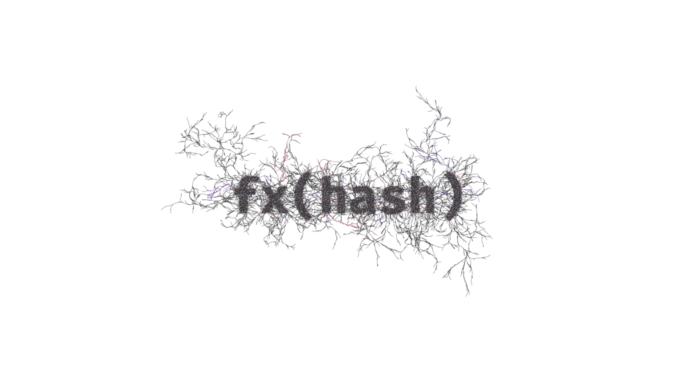For years, generative art has been a major facet of the NFT market. From algorithmically-produced batches of PFPs to collaborative AI 1/1s, some of the most influential artists and projects on the blockchain employ generative technologies in their creative processes.
Given the popularity of generative art, it makes sense that community-driven platforms like Art Blocks, Gen.Art, and Brain Drops have maintained their positions as leaders in the space on the Ethereum blockchain. Yet, just as developers and collectors alike continue to seek out more economical solutions for creating and trading NFTs, it seems so too are administrators.
Even as the NFT market ebbs and flows, the ever-present competition among NFT marketplaces has yet to wane. New challengers are entering the ring often, and not just on the Ethereum blockchain. One such contender, fxhash, has caught the attention of the greater NFT community and is taking the generative art sector by storm.
What is fxhash?
Launched in November 2021, fxhash is both a generative art platform and marketplace that lives as an open ecosystem where artists can mint generative NFTs without having to jump through the hoops associated with traditional generative platforms. The platform was created by multitalented artist ciphrd, who has dictated the philosophy of fxhash as “no curation, open to everyone.”
In contrast to platforms such as Art Blocks or Nifty Gateway, fxhash’s lack of curation might be one of its most prominent features. Waitlists for curated platforms like SuperRare and those previously mentioned extend out for months and are notoriously difficult for applicants to secure a place on.
Yet, while there are few roadblocks between an artist joining fxhash and jumping straight into minting their first collection, the platform seems (at times) to be a perfect target for scammers and other malicious individuals. Because of this, the marketplace’s moderators have implemented a variety of safety features to protect collectors. With safeguards such as reporting, moderation, flagging, and mint locking systems in place, fxhash is considered a relatively safe place to trade generative NFTs.
As a result, the platform is seen as a frontrunner in community-focused and digitally native ecosystems. This could also be due, in part, to how fxhash prides itself on being fully on-chain. It even boasts a name that combines terminology related to how blockchain transactions are created. (i.e. “hash” being a signifier of a blockchain transaction like those found on Etherscan and other related block explorers).
How does fxhash work?
Fxhash presents a variety of easy-to-use features for both collectors and artists. Because minting on the platform can get a bit complicated, artists are incentivized to use the “sandbox” section of fxhash’s website to get a sense of how a project might behave once deployed on the blockchain. General enthusiasts are also invited to explore the vast collection of both established and forthcoming projects on the platform through a range of easy-to-use dashboards, making fxhash a solid option for the many different types of creators and consumers within the generative art ecosystem.
Although the barriers to entry are low, fxhash does work a bit differently than other NFT platforms/marketplaces. With most marketplace-based projects, developers will author a smart contract or utilize platform-specific tools to create one. Then the contract will be deployed onto the blockchain, complete with a supply of NFTs to be created or released during mint.
This process varies depending on the type of platform a developer uses, or if they decide to go the independent route and have collectors either mint directly from the contract or via a minting site. Regardless of the method, though, minting often works by a user submitting a transaction on a blockchain, which triggers the creation of an NFT.
This remains true on fxhash, but the underlying mechanics behind minting on this specific platform are based around generative tokens (GTs). Simply put, GTs are a type of token created by an artist utilizing the main fxhash smart contract, and provide the basis for all subsequent NFTs that collectors mint on the platform.

Every NFT on fxhash is simply an iteration of an original GT — meaning that instead of minting a randomized token from a smart contract, collectors on fxhash are minting an NFT that is directly correlated to the original image/animation of a GT. This is a unique aspect of fxhash, as it allows for artists to create a mother token that collectors can create unique iterations of, effectively resulting in a collection (usually capped at a few hundred) over time.
Yes, this all sounds a bit dense, but it’s actually much simpler once put into action. For an in-depth look at the mechanics and how to get started on the platform, check out fxhash’s guide to creating and collecting tokens here.
Fxhash and the future of the generative art market
Since the early 2021 NFT boom, the generative art market has seen its fair share of ups and downs. Once heralded as a quintessential part of the NFT ecosystem, platforms whose sole focus is proliferating generative NFTs have made a lasting impact on the NFT community, but continue to be overshadowed by both PFP and play-to-earn projects.
This isn’t to say that generative art is dead, and the success of fxhash reveals quite the contrary. Just as would be OpenSea competitors aim to grow the NFT ecosystem and provide alternatives to the tried and true marketplaces of old, platforms like fxhash seem to be reinforcing the staying power of generative art NFTs.
Some of the most prominent NFT projects in existence, including CryptoPunks, Fidenza, Autoglyphs, Chromie Squiggle, and more are based on generative principles. Yet, while these top-tier collections remain pertinent to the NFT price and popularity indexes, the saturation of the generative NFT market (which has anecdotally centered around Art Blocks) may be contributing to the lessening interest in generative art in Web3 spaces.
At less than a year old, though, it’s clear that fxhash has the potential to be a lasting facet of the NFT ecosystem. And why shouldn’t it, considering its perfect positioning as new and shiny in the NFT hype cycle, as well as being based on the flourishing and ecologically-sound Tezos blockchain?
Although most secondary sales figures on fxhash likely won’t be making headlines anytime soon, the ease of use, lack of curation, and community-centered management (with a DAO and native token on the horizon), definitely make this platform a force to keep an eye on for the foreseeable future.
Credit: Source link






















 Bitcoin
Bitcoin  Ethereum
Ethereum  Tether
Tether  Solana
Solana  USDC
USDC  XRP
XRP  Lido Staked Ether
Lido Staked Ether  Toncoin
Toncoin  Dogecoin
Dogecoin  Cardano
Cardano  Shiba Inu
Shiba Inu  Avalanche
Avalanche  TRON
TRON  Wrapped Bitcoin
Wrapped Bitcoin  Polkadot
Polkadot  Bitcoin Cash
Bitcoin Cash  Chainlink
Chainlink  NEAR Protocol
NEAR Protocol  Polygon
Polygon  Litecoin
Litecoin  Fetch.ai
Fetch.ai  Internet Computer
Internet Computer  Uniswap
Uniswap  Dai
Dai  LEO Token
LEO Token  Render
Render  Ethereum Classic
Ethereum Classic  Hedera
Hedera  First Digital USD
First Digital USD  Aptos
Aptos  Pepe
Pepe  Cosmos Hub
Cosmos Hub  Cronos
Cronos  Mantle
Mantle  Filecoin
Filecoin  Wrapped eETH
Wrapped eETH  Stellar
Stellar  Immutable
Immutable  OKB
OKB  Stacks
Stacks  dogwifhat
dogwifhat  Renzo Restaked ETH
Renzo Restaked ETH  Optimism
Optimism  Arbitrum
Arbitrum  The Graph
The Graph  Arweave
Arweave  Bittensor
Bittensor 
